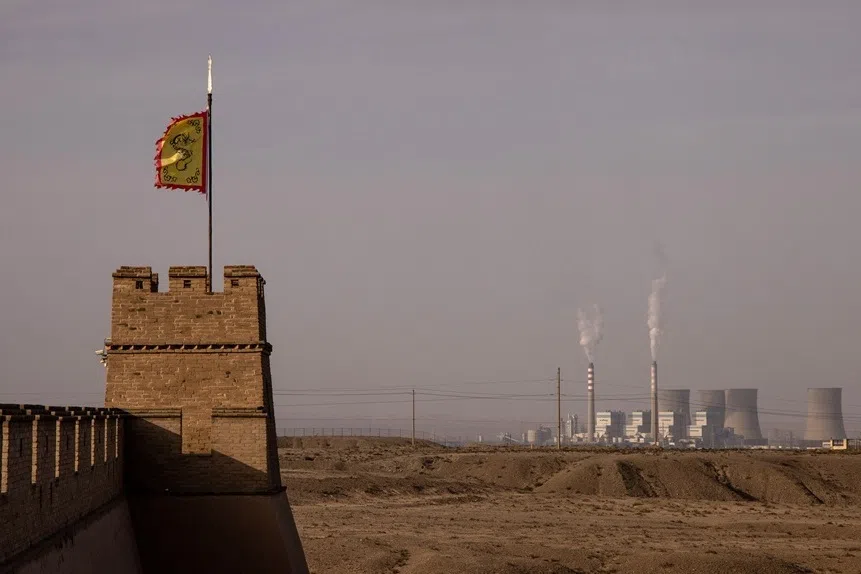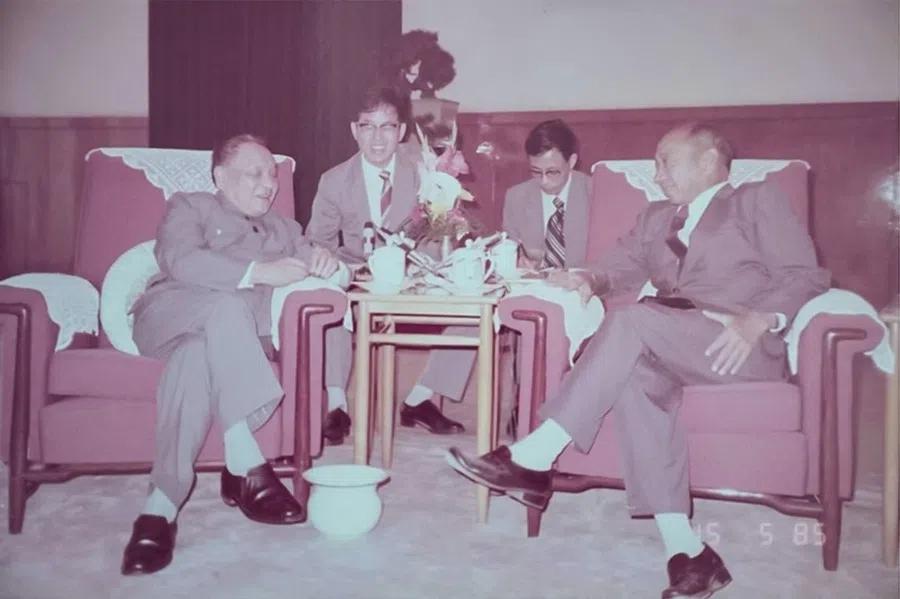Preserving the hutong: "What's in it for us?"
Heritage conservation sounds ideal, but not every resident of Beijing's heritage streets wants their homes to stay.
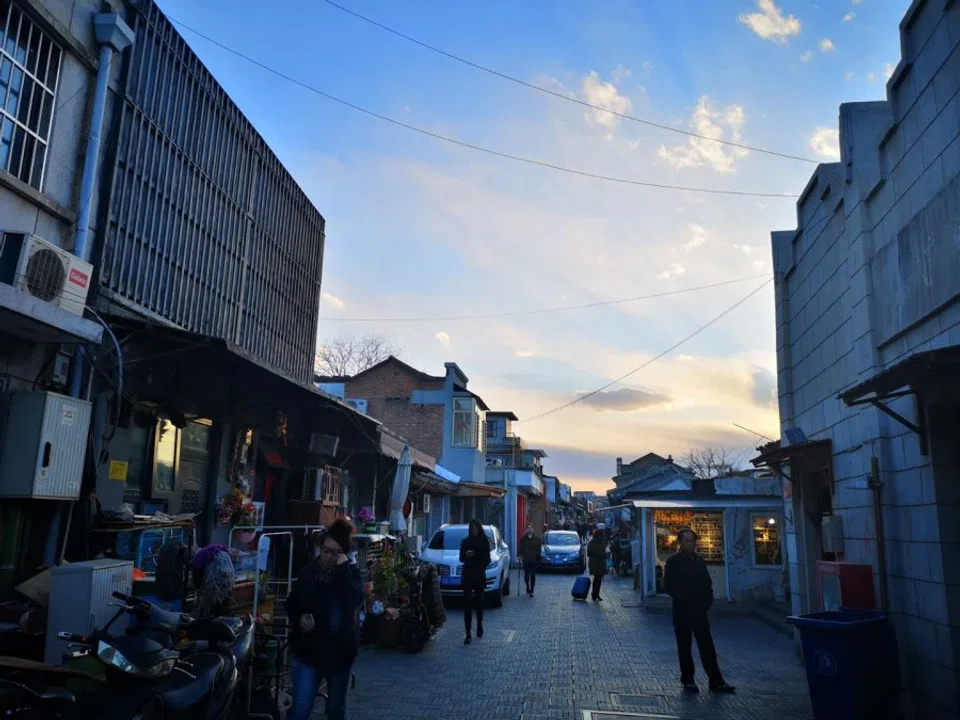
Like most parts of modern China undergoing rapid urbanisation, many reminders of what Beijing used to be are quickly being eroded as the bulldozers move in. Since the 1990s, Beijing's signature hutong - warrens of alleys and courtyards where ordinary residents of the Chinese capital lived out their daily lives -- have mostly been demolished.
What remains are the few streets that have been commercially redeveloped for tourism, along with some original hutong, which still function as neighbourhoods but whose dilapidated state make for less than savoury living conditions.
In 2017, when the Beijing Urban Master Plan was unveiled, the authorities announced that there would be no more major demolitions in the old city, thus paving the way for hutong conservation.
Streets and buildings facades will be cleaned up, residents will no longer be forced to relocate, the creative industries will be encouraged to move in, and invite hipster cafes and galleries to follow suit.
Given that these look like all the right moves in giving Chinese heritage an extension of life, why do some hutong residents feel marginalised in the process?
The balance between authenticity and viability
Sixty-year-old Hu Chengming is a resident of Yingtao Hutong, or Cherry Alley, which sits at the end of Yangmeizhu Xiejie (xiejie literally means "crooked street"). Hu started learning from his father how to make ink brushes at age 20, and in 2014, he turned the home he shared with his wife into a store selling ink brushes. The tiny, 20-sq-m room is now a multi-purpose space where they have their meals, work, and sell his wares.
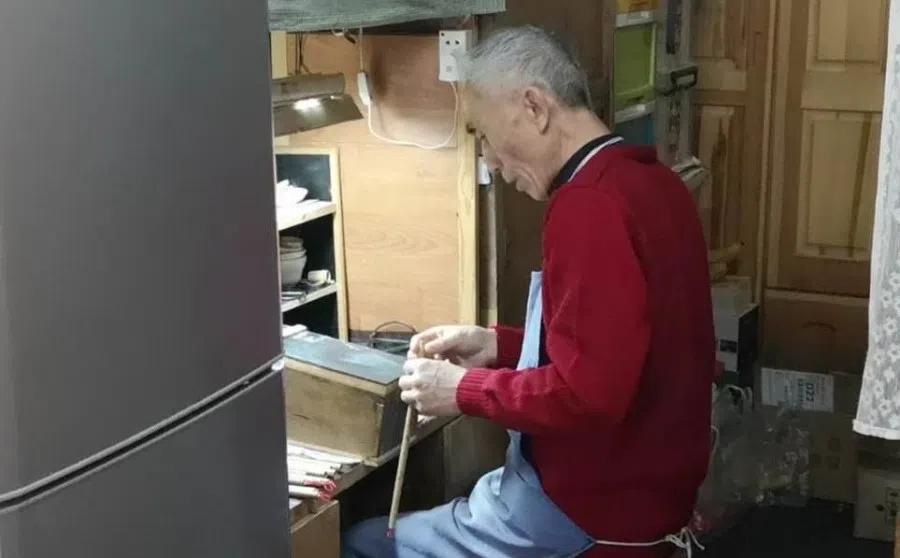
The au naturel look of the workshop (it carries no sign) and the sight of Hu practising his craft on the work table strewn with brush shafts and animal hair makes for highly Instagrammable shots. His humble little shop could even be called an Internet sensation, as are several other spots along the 500-m-long street, located in a populous area in the south of Beijing.
The street runs from northeast to southwest, linking the Dashilan commercial area and Liulichang, selling mainly traditional artworks and trinkets.
Amid Beijing's major redevelopments over the past 20 years, many hutong have disappeared. Even the premises linked to some of China's famous personalities have not been spared. Yangmeizhu Xiejie is lucky to survive, though not without its share of casualties.
In the early days, there were seven bookstores on the street, earning it the nickname "Publishers' Street". It was also home to Qing Yun Ge (Blue Cloud Pavilion), a high-end commercial and entertainment venue in the late Qing dynasty and early Republic era, where some of Chinese history's greatest thinkers such as Kang Youwei, Liang Qichao and Lu Xun passed their time.
No. 61 Yangmeizhu Xiejie is the old address of the Hunan Youxi Huiguan (Youxi Association), where writer Shen Congwen once stayed during his northern travels; the residence of Qing dynasty academic Liang Shizheng, who served under the Emperor Qianlong, was at No. 25. Those have since been replaced by courtyard houses, called dazayuan.
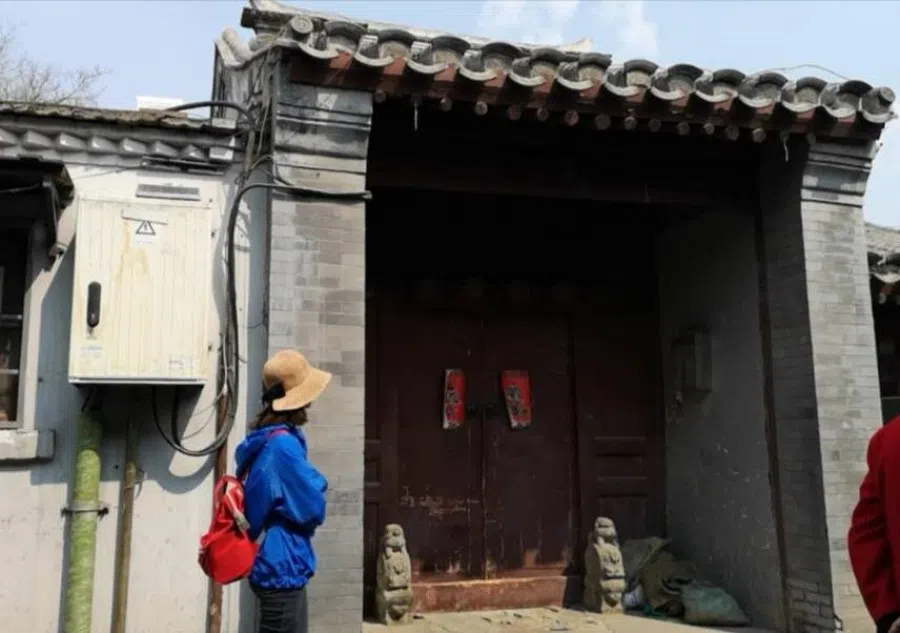
In 2011, the street made it to the Chinese government's list of places for priority renewal and redevelopment. Authenticity became a priority, and what helps is the presence of practising craftsmen such as Hu. Among them are the makers of the famous "Three 'Wangs' (or Kings) of the Capital": Wang Huihui Dog Skin Medicinal Plasters, a product that has been around for over 400 years; Wang Mazi Scissors and Wang Zhihe Fermented Tofu.
Today, the 21st-generation descendant of Wang Huihui has even opened a bookstore -- Ji'anzhai Bookstore -- at its old address at No. 66 Yangmeizhu Xiejie, as a nod to the street's publishing past.
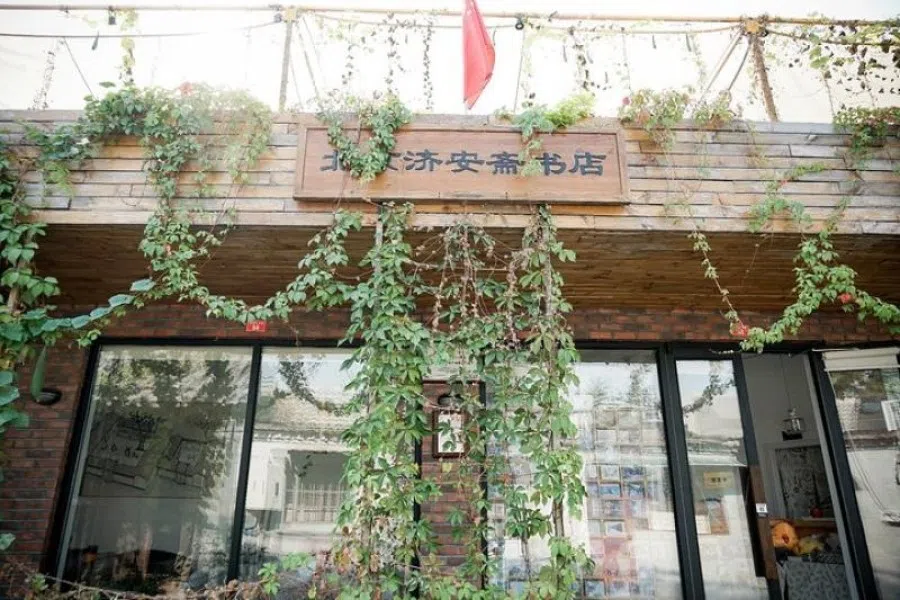
The redeveloped Yangmeizhu Xiejie is also different from other redeveloped hutong because the upgrading was done with a much lighter hand - even the hipster stores that have moved in are low-key and blend in organically with the old. You won't find here the neat, homogenous shopfronts of the other cleaned-up streets.
The residents' lives continue to spill out into the street, from boxes of homegrown onions and garlic sitting outside their shops, to retro goods still in use. A woman is out walking her dog, a man saunters about in his pyjamas, sellers pass by pushing their grocery carts.
That everyday way of life mixed with authentic modern touches is what makes Yangmeizhu Xiejie a magnet to visitors searching for a slice of old Beijing that has retained its sparkle and tradition.
Hutong residents are unimpressed
Unfortunately, except for the tradesmen like Mr Hu who appreciate the revitalised custom and attention from visitors and tourists, many hutong residents do not share the same enthusiasm for the conservation efforts.
"They say this place is full of local flavour. I get foreign youngsters asking me if they can go in and see the house, feel the history and take photos. Can I say no? But besides getting disturbed by all these intrusions, what's in it for us?"
They feel like cultural condiments to the landscape, props for a set. Among them are Mdm Li, a 58-year-old retiree living in Yangmeizhu Xiejie, who complains about how the roads are now paved and the overall environment has improved but her own living conditions have not.
Pointing to the old, dilapidated doorway behind her, she grumbles, "They say this place is full of local flavour. I get foreign youngsters asking me if they can go in and see the house, feel the history and take photos. Can I say no? But besides getting disturbed by all these intrusions, what's in it for us?"
She is likely among the residents who sniff at improvements such as the flowerbeds installed in front of their houses as part of a greening project for the area.
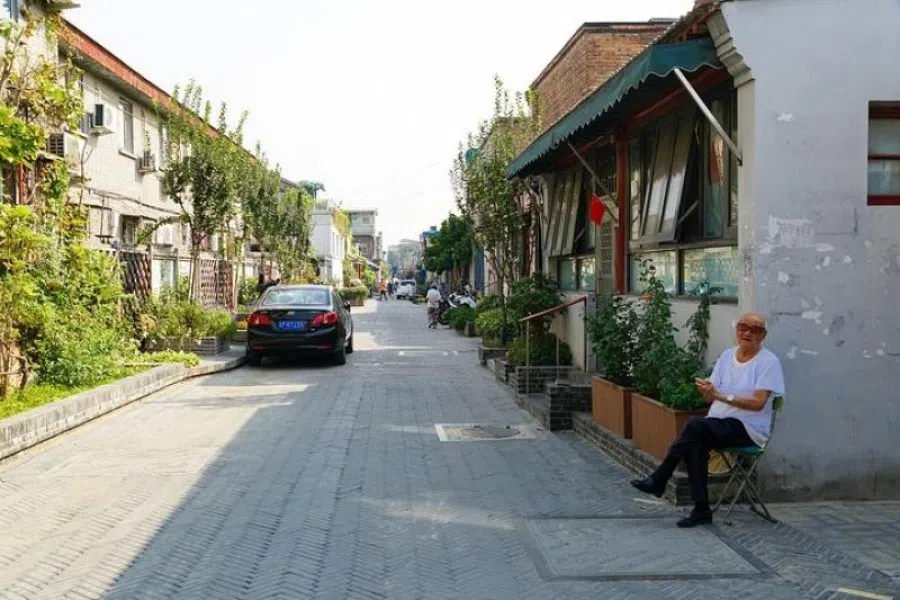
In 2015, View Unlimited landscape architecture studio, under the China Urban Construction Design & Research Institute, started the project for the homes, where the flowerbeds were planted with bamboo and other decorative plants to beautify the building facades. However, it was not long before the residents replaced the plants with edible vegetables.
The View Unlimited team, headed by Ms Xie Xiaoying, then thought to help the households turn their vegetable plots into sources of income, and found ways for them to sell their harvests. But the residents were not interested. They just wanted to get on with their lives.
One common refrain was, "what has the cultural street got to do with us?"
It dawned on Ms Xie that what the residents wanted did not go against the government's efforts to keep the hutong culture vibrant - what they wanted was true culture, coupled with improvements to their homes.
When the government tries to improve the hutong with these cosmetic upgrades by introducing fresh new public spaces and hipster stores, the dazayuan appear even more run-down in contrast, she noted.
Dilemma over the dazayuan
Faced with their improved surroundings but ageing homes, hutong residents are in a dilemma whether to stay put or move away.
Seventy-two-year-old Mr Fei, a resident of a dazayuan in Zhiranju Hutong, feels he will have little choice but to move. Miserably, he tells Zaobao: "Beijing city is becoming more beautiful, but our dazayuan is becoming more dilapidated. It doesn't fit; it will definitely not stay. But if I move...I would die alone. Now, the neighbours drop in, and there is always someone around if anything happens."
Associate Professor Wang Zhigang of Tianjin University's School of Architecture feels that in terms of their function as living spaces, the hutong are at the end of the road. The dazayuan's cramped conditions cannot accommodate the modern conveniences of nice bathrooms and kitchens, he said. "Hutong can only fit the old way of life. Many who feel for the hutong are bystanders and tourists who would not mind the occasional inconvenience. But it is everyday life for those who live in them."
The 2017 Beijing Urban Master Plan, which laid down the city's development blueprint till the year 2035, effectively stops developers from stepping in to tear down the buildings in the hutong and forcibly relocate the residents.
This was bad news to the residents who had hoped to move to better living conditions with the money they would have been compensated with.
Mdm Hu, 60, who lives near the East Second Ring Road, was glum when she told this reporter: "I was waiting and hoping to relocate to a bigger house. That's not going to happen now."
She rents a 20-sq-m unit with her father in a dazayuan that houses 70 families in a space of less than 2,000 sq m. "With our income, we wouldn't be able to afford a house. Getting relocated was the only way." On their own, they would only be able to afford a shared unit outside the Fifth Ring Road, further from the heart of town. "That would exhaust all our savings. We might have to stay on."
It is hard to tell the fate of these preserved hutong. Some, like Yangmeizhu Xiejie, may thrive on their newfound relevance to the local and tourist population. What is certain is that the soul of the hutong lies in the residents who live out their everyday lives in its homes and streets.
As View Unlimited designer Tong Yan said in an essay about the Yangmeizhu Xiejie redevelopment, as long as ordinary life goes on, Beijing's hutong will never become a culture scrapyard.
This article was first published in Lianhe Zaobao on 14 April 2019.

